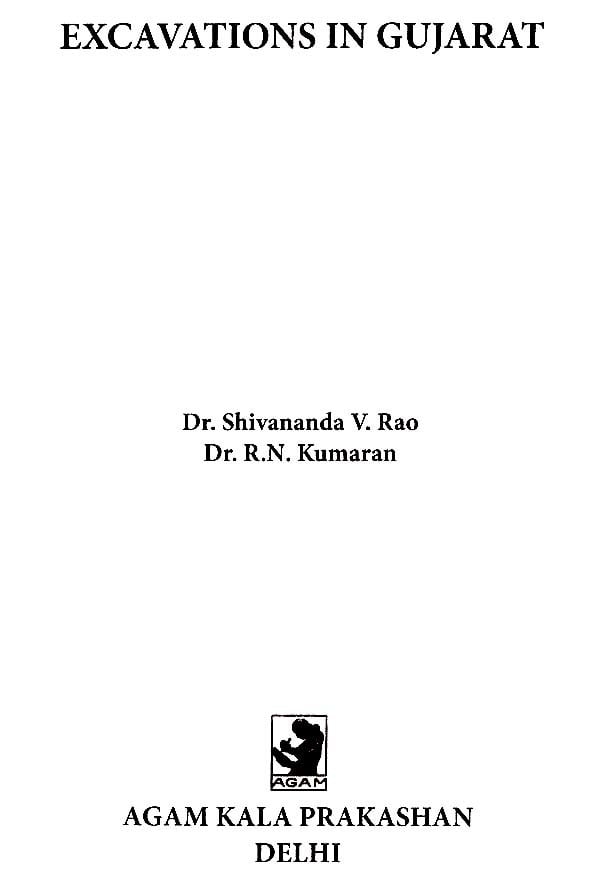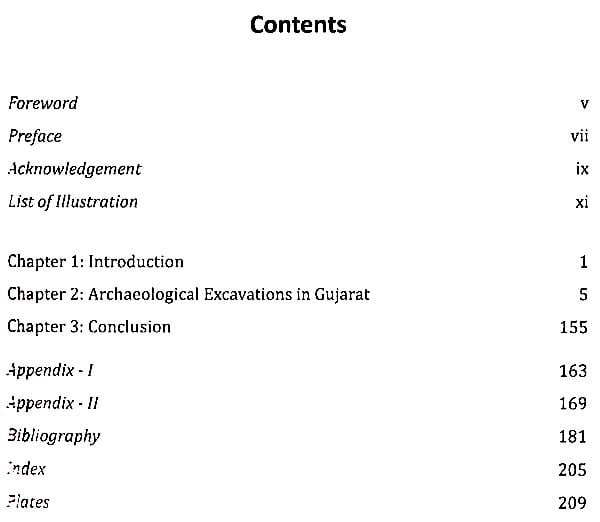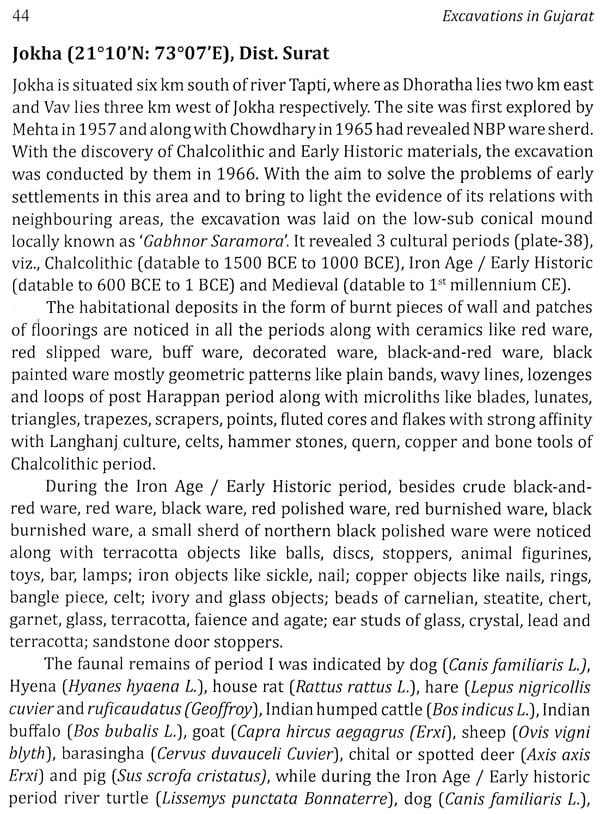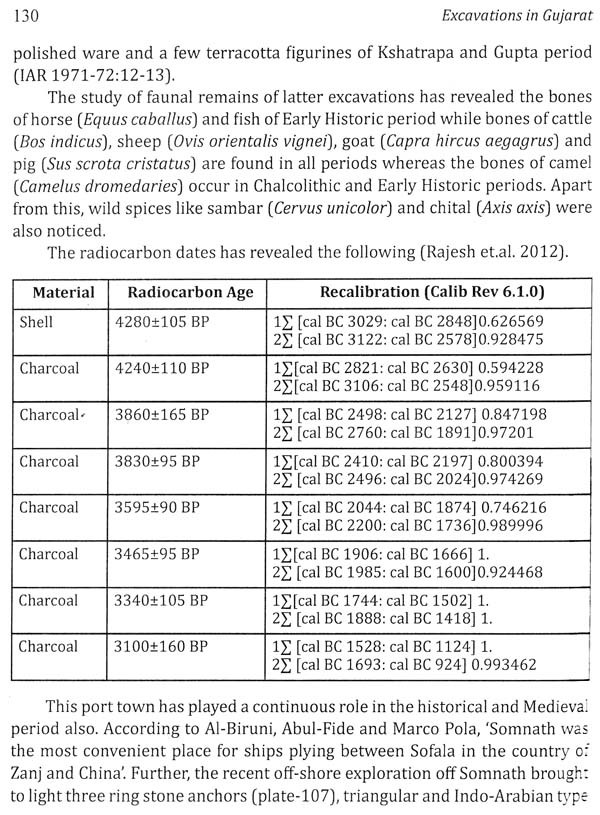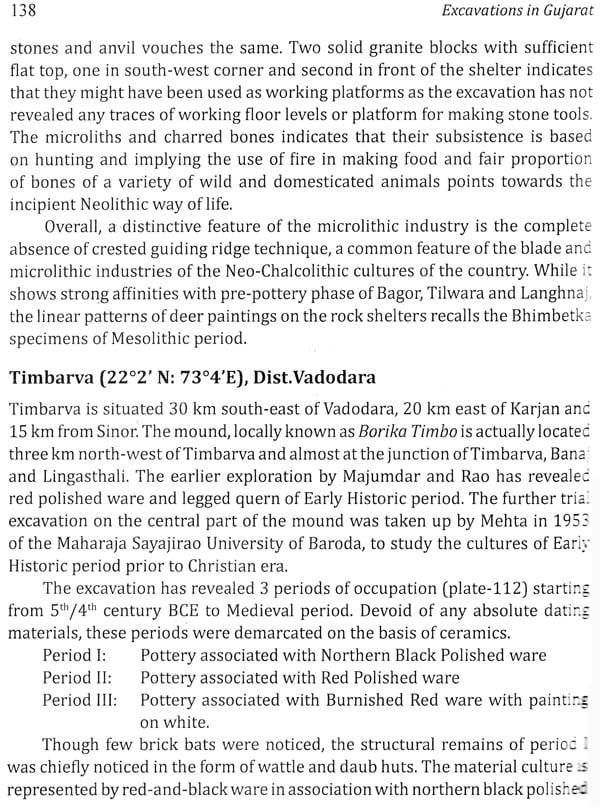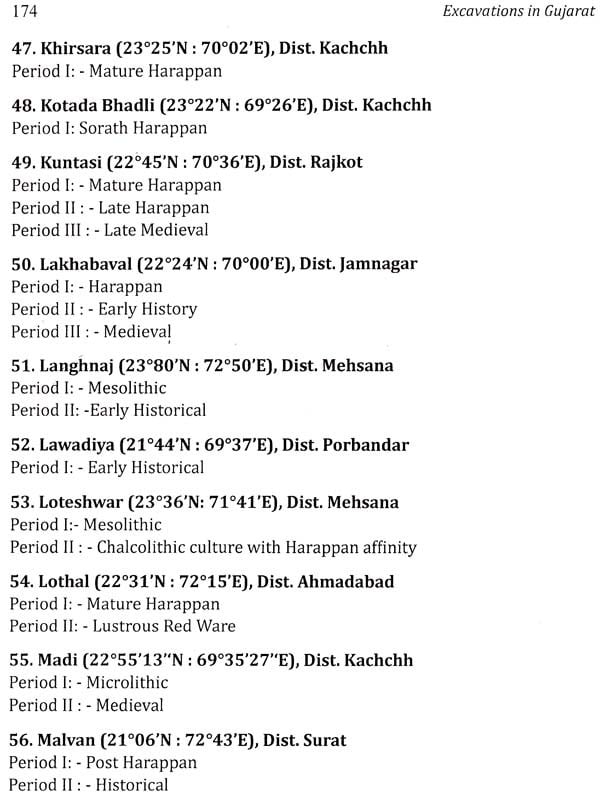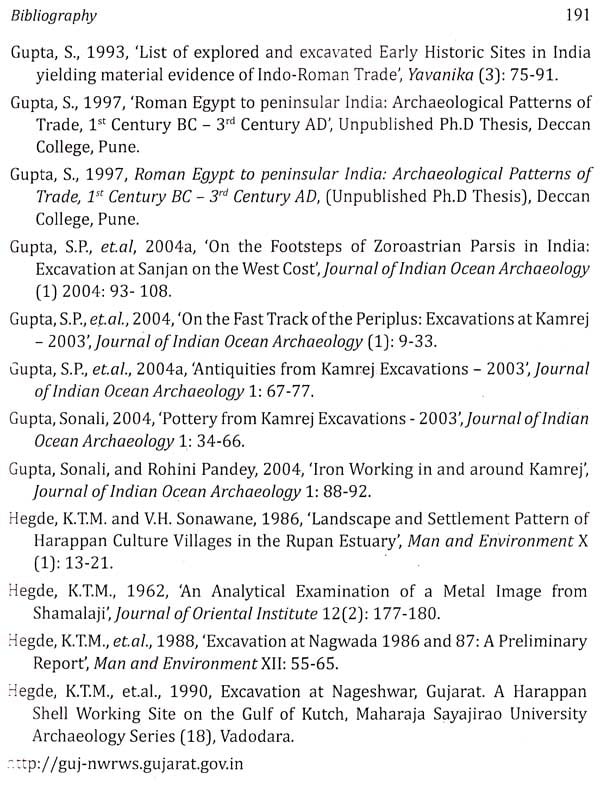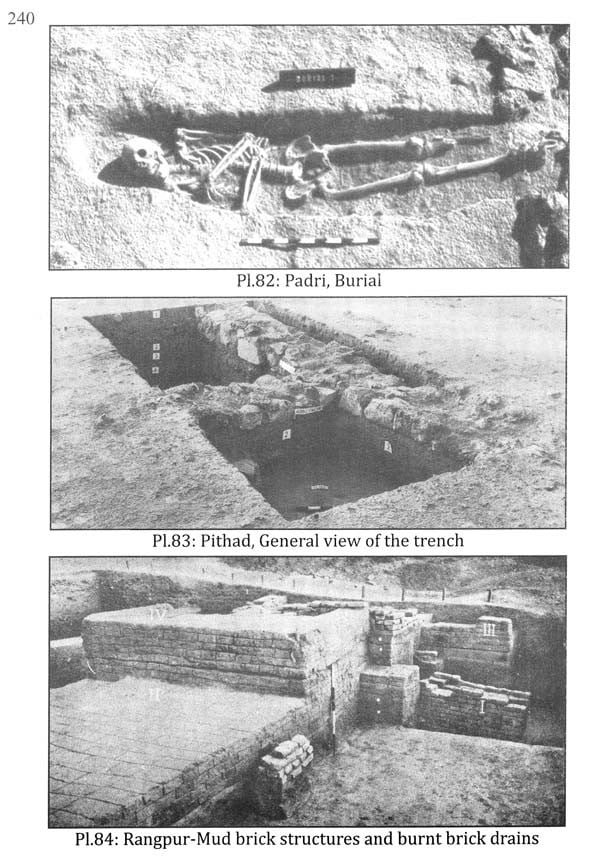
Excavations in Gujarat
Book Specification
| Item Code: | AZH409 |
| Author: | Shivananada V. Rao |
| Publisher: | AGAM KALA PRAKASHAN, DELHI |
| Language: | ENGLISH |
| Edition: | 2015 |
| ISBN: | 9788173201592 |
| Pages: | 274 (Throughout B/W Illustrations) |
| Cover: | HARDCOVER |
| Other Details | 10.00x7.00 inch |
| Weight | 780 gm |
Book Description
This book 'Excavations in Gujarat' gives a comprehensive history of excavated sites in Gujarat along with the material culture unearthed during excavations. These are otherwise unpublished and a many lies in the doctoral thesis of scholars that are unavailable to others. Gujarat is the only state in India where the archaeological vestiges has revealed the evidences for the First, Second and Third Urbanizations. Besides, the study of the variety of small objects from excavation has helped in understanding the life of the common people which is of enduring interest. All this had added to our knowledge and understanding of the development of the Personality of India.
Dr. Shivananda V. Rao (b. 1954) has worked in Archaeological Survey of India in various capacities and retired as Regional Director in 2014. He had authored and edited many books and volumes and had written number of research articles and presented papers in various National and International seminars.
Dr. R.N. Kumaran (b.1975) is presently working in Archaeological Survey of India as Assistant Archaeologist. He had authored a book entitled 'Ports and Pots in Gujarat'. He had contributed number of research articles in various journals and presented papers in various National and International seminars.
Gujarat can be rightly called as 'cradle of civilization, because thousands of archaeological sites ranging from Lower Palaeolithic to late Medieval period were documented in this zone. Of these, nearly 120 sites were excavated by various departments like Excavation Branch and Vadodara Circle of Archaeological Survey of India, the Maharaja Sayajirao University of Baroda, State Archaeology Department, Gujarat, Deptt. of Museums, Gujarat, Deccan College, Pune, National Institute of Oceanography, Goa and the explorations by various scholars and institutions both onshore and offshore. Some of these sites were extensively excavated while the other are excavated to know the cultural sequence of the site. These reports are published in the form of monographs, articles and some lies in the doctoral thesis of scholars that are unavailable for others. The idea for this book occurred sometime back when I was posted at Vadodara as Superintending Archaeologist and Shri Kumaran as Assistant Archaeologist of the Excavation Branch to bring out a comprehensive history of excavated sites in Gujarat along with the material culture excavated from the same to the layman otherwise unpublished.
Every effort has been made to track down all the copyright holders of materials in this book. If anyone has been overlooked we ask out to be forgiven and promise to make amends in a future edition. Needless to say, any shortcomings are entirely our own fault and responsibilities.
The aim of archaeology being a source of history is the reconstruction of ancient civilization and culture of bygone ages. An archaeologist attempts 'to reconstruct the process that has created the human world in which we live and 'mans progress of evolution through the ages. In the early twentieth century, the history of India was dramatically changed with the discovery of Indus Valley Civilization on the banks of Ravi. This not only created curiosity about the Indus valley but also of other cultures. Till date, thousands of sites were subjected to excavations throughout India by various agencies. However, the report is still out of reach to many.
In Gujarat, the works of various scholars like Foote, Sankalia, Soundararajan, Badam and Pappu, Ajithprasad and others has revealed nearly 1000 prehistoric sites ranging from Lower Palaeolithic to Mesolithic period. Of these, only 22 sites were excavated to know the nature of settlement. These excavations have revealed the evidence of prehistoric vestiges along with other cultural assemblages - only Amrapura, Dhansura, Phajalpura and Samadhiala were of pure prehistoric nature. These excavated sites are situated in various ecological zones and none of the site shows the continuous occupation.
**Contents and Sample Pages**
